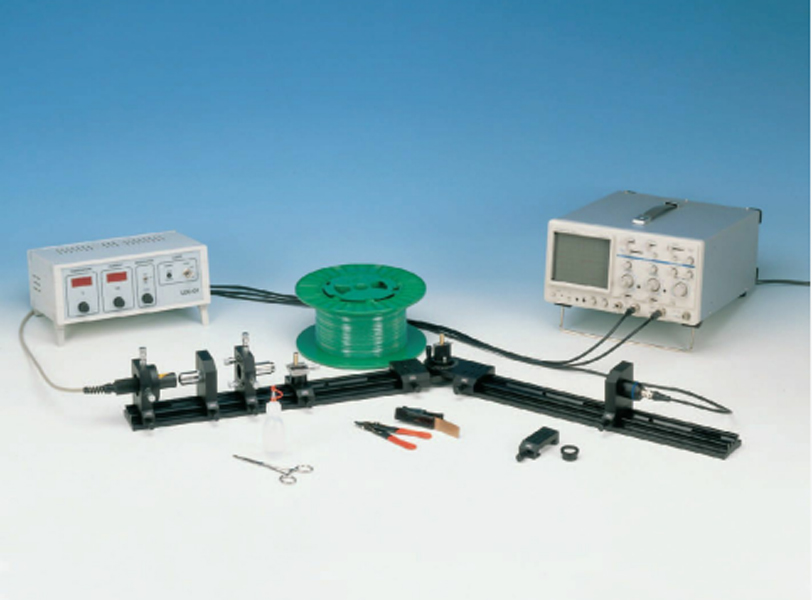Fibre optics

The beam of a laser diode is treated in a way that it can be coupled into a monomode fibre. The problems related to coupling the beam into the fibre are evaluated and verified. In consequence a low frequency signal is transmitted through the fibre. The numerical aperture of the fibre is recorded. The transit time of light through the fibre is measured and the velocity of light within the fibre is determined. Finally the measurement of the relative output power of the diode laser as a function of the supply current leads to the characteristics of the diode laser such as “threshold energy” and “slope efficiency”.
- telecommunication and computer networking rely heavily on these techniques
- convince yourself of the advantages and see the basic working principles of optical fiber applications
- see by your own measurements that even light takes some time to travel through a fiber
Experimental set Fibre optics
Digital Storage Oszilloscope 200 MHz, 2 Gs/s
Screened cable, BNC, l = 750 mm
- Couple the laser beam into the fibre and adjust the setting-up in a way that a maximum of output power is achieved at the exit of the fibre.
- Demonstrate the transmission of a LF-signal through the fibre.
- Measure the numerical aperture of the fibre.
- Measure the transit time of light through the fibre and determine the velocity of light within the fibre.
- Determine the relative output power of the diode laser as a function of the supply current.
- Total reflection
- Diode laser
- Gaussian beam
- Monomode and multimode fibre
- Numerical aperture
- Transverse and longitudinal modes
- Transit time
- Threshold energy
- Slope efficiency
- Velocity of light
